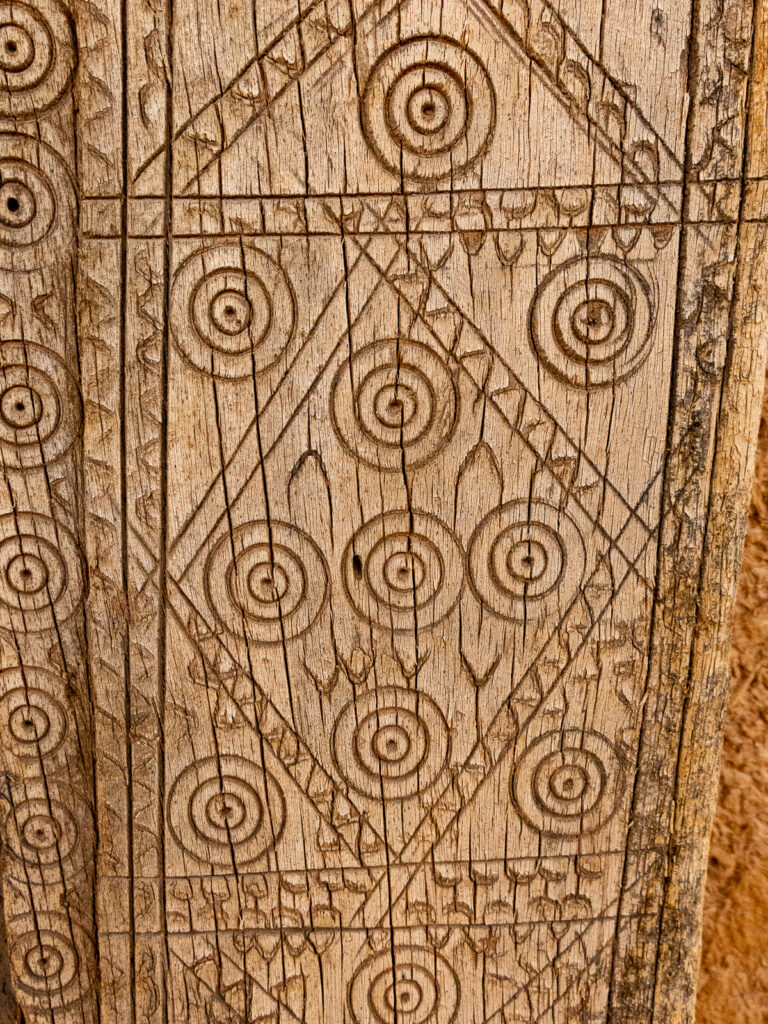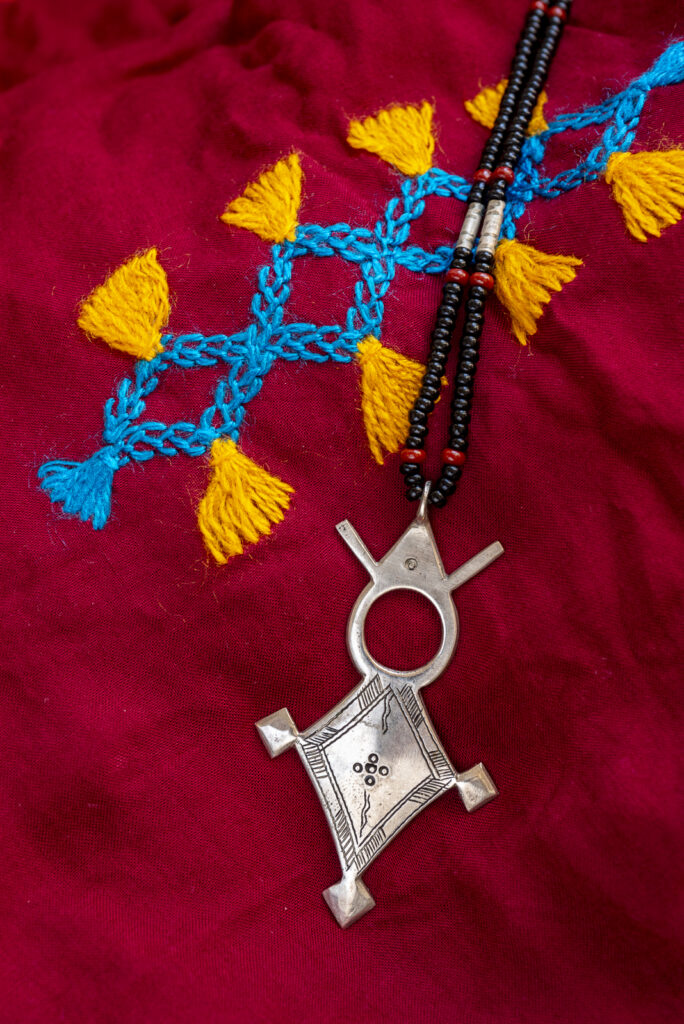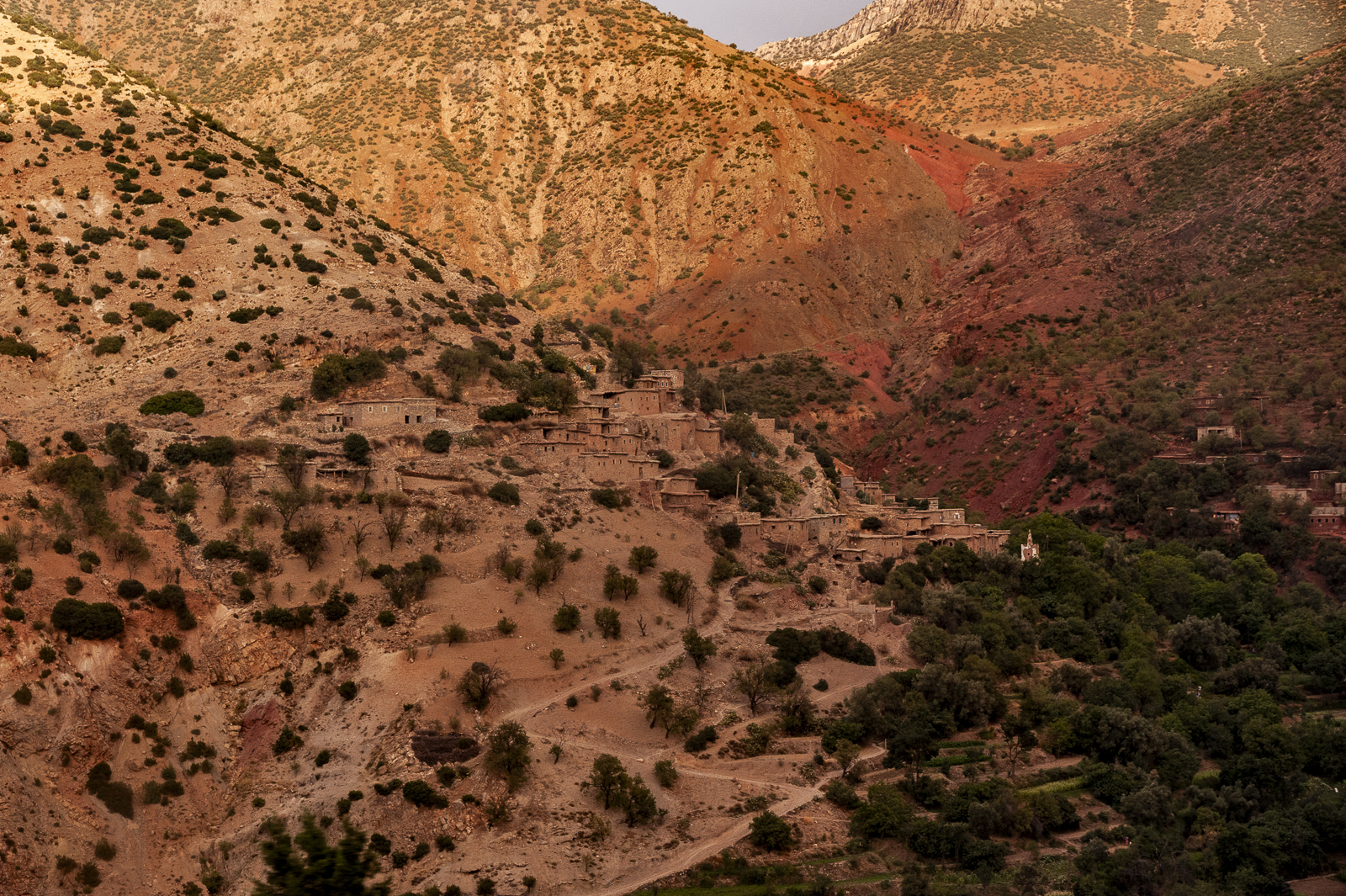

From the sky, the moon, the sun and the stars; from the earth, seeds, wheat, palm trees and olive trees; from the house, pottery, baskets and tapestries, embroidery and dresses; from the body, tattoos, earrings, necklaces and pendants…
Amazigh material culture displays a rich array of symbols that are as simple and schematic as they are captivating. Crossed lines, circles, symmetrical dots, rhombuses and figures in primary colours populate and enliven all kinds of domestic objects, material and physical ornaments that catch the eye and challenge the curious viewer.
They are images that silently tell the story of an ever-living tradition. Behind these simple patterns lies a part of the cultural identity of the Amazigh. It is an identity which, in both art and material culture, takes on an unmistakably feminine hue: it is the women who create most of these symbols in their textiles, tattoos, jewellery and everyday objects, and it is the women who adorn them and supply them to the men. The zigzag lines that reflect water, the diamonds and circles that ward off the evil eye, the rhombuses and triangles that represent fertility… a constellation of changing signs, whose interpretation clings to the realms of the oral, and which in every latitude of Amazigh culture captivates the eye and challenges interpreters. As the proverb says:
“The land whose stones know you is preferable to the land where only the inhabitants know about you”
Pedro Buendía
Complutense University of Madrid
















